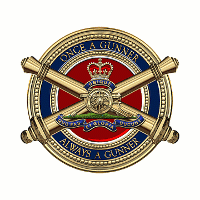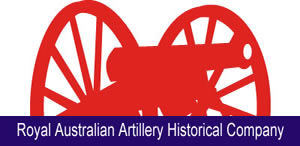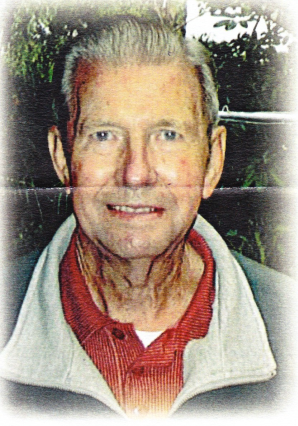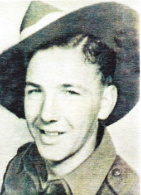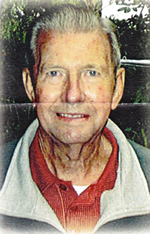It may surprise some here today, but Tom was not born a warrant officer. He was born the youngest and only boy to seven sisters at Richmond in Melbourne, and yes, he was born a one-eyed supporter of the Richmond Tigers football team. His military records say that he came into this world on 19 November 1927. He grew up in tough Depression years and when his father passed away far too early, Tom was obliged to leave home and work on a dairy farm not far from Melbourne.
One Saturday evening, he hung on a beauty with his mates down in Melbourne and was half an hour late
into the stalls to milk the cows next morning. His boss clipped him over the ear and reminded him of his obligations. To his credit, Tom, a fair strapping country lad by this stage, merely set down his bucket,
collected his belongings and left the farm—forever.
This was March 1946 and the only part left of the Second World War was service with the Occupation Forces in Japan. Knowing that he had to be 19 years of age to be accepted, Tom merely wound back his birthday some 16 months and became a soldier. Gunner Banfield achieved his goal posted as a reinforcement to A Field Battery in Japan and one day, Tom was introduced to a new room mate, Gunner
Donkin. The pair became lifelong friends and indeed, I owe much of today’s low-down on Tom to this retired Warrant Officer Class One, Don Donkin.
Don recalls that he had not heard of the term ‘Goose’ to describe a dunce, a dim wit or a drongo before meeting Tom, but when Tom said, ‘Yer know Don, this chap’s a real goose’, then you also knew that this bloke would certainly not be on Tom’s Christmas card list that year.
Both Tom and Don were drivers and Don fondly remembers his mate as ‘good, sharp, always on time, very particular with his gear, and looked after his truck well’. Tom returned to Australia with A Battery in December 1948 and became part of the new 1st Field Regiment five months later. Here, he remembered many duty tasks, perhaps the most enjoyable of which was when he and Don Donkin were lead drivers for the precision regimental musical drive at the annual Army Tattoos in Sydney.
Despite a limited education, Tom applied himself and became a technical assistant in the Royal Artillery, a TARA whose prime duties were to plot targets in the guns’ command post. He was no slouch on the sporting fields either—Brian Czislowski remembers him as a very good Aussie rules player in the 1st Field Regiment team which won the Eastern Command Interservice Competition in 1955. Brian also cites him as ‘a very competent interservice rep basketballer’.
By 1955 Tom was a gun sergeant allocated to the new field battery being raised for service in the Malaya Emergency—M, which became 105th. Gerry Salom, his troop commander described Tom as a ‘number one top soldier’ whilst then Lieutenant Colin Cunningham remembers him as being very professional, running a very disciplined gun detachment, and always being pleasant and helpful to a young officer. Fellow sergeant, Geoff Jebb remembers Tom driving a bleeding Lieutenant Pat Gowans to hospital in a GMC truck following a vehicle accident when looking for a missing navigation exercise pair. Tom lost control on a bend, dived out to save himself, and Pat ended up thrown out of the truck in the ditch. Tom rushed up expecting the worst, but instead was asked by a dazed Pat, ‘Have we found those fellows yet?’
This was a short tour of duty for Sergeant Banfield who returned to Australia in 1956. Then, living up to his belief that things must be done correctly, he promptly returned to Malaya in 1957 for a full two-year tour as a TARA sergeant with A Field Battery. Each morning when he came into the CP, Tom would
hang up his belt and study the battle map in detail for the first ten minutes or so. Bob Cunningham was a gunner TARA in this command post and, with his mate Barry Olver, began surreptitiously taking in Tom’s belt one notch each morning. Tom was very keen on physical fitness but it was noted that he seemed to be having trouble putting on his belt as he left the CP. After five days, when it was impossible to do up the belt, Bob told Tom of his little game and he good-humouredly thought it a great joke.
Back in Australia in 1960, Tom was posted to the School of Artillery but he didn’t really like this break away from what he called ‘real soldiering’. Instead, Tom opted for the warmer climes again and rejoined 105th Battery to move to the fledgling 4th Field Regiment at Wacol, Brisbane. There he continued to excel
in the unit Aussie Rules team and also became a star in 2IC John Stevenson’s basketball team.
When he next returned to the School, it was on promotion to warrant officer, so there was a salve in this
posting. Not only that, but he found a striking redhead named Margaret who was the switchboard operator. They were married and happily produced two offspring—Stephen and Vicky.
Following cadre service with the CMF in Sydney then Geelong, Tom returned to Holsworthy as battery sergeant major of 104th Medium Battery. This lined him up to be promoted WO1 and appointed regimental sergeant major of 12th Field Regiment.
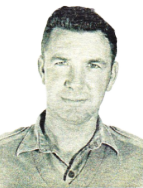 |
However, the Vietnam War was well under way and Tom was worried that 12th Field might not get there before it ended. To ensure he received a slice of the action, he took a reduction in rank, became the battery sergeant major of 108th Field Battery, and headed for Vietnam in 1967. With his many years of experience, Tom performed above the average and welded the NCOs of the 108th into a very strong team. His battery commander, Jock Jenvey described him as ‘a bloody capable guy’ who was ‘a tower of strength and very highly regarded by all members of the battery’. Jock also recalls how, when a soldier presented Tom with a chit for five days no standing, he was told, ‘In all my 21 years of service I have never seen such a chit … and still have not,’ he added as he ripped up the chit.
|
On return to Australia, Tom was promoted temporary warrant officer class one again and posted as the RSM of a cadet battalion based in Mackay, then another in Melbourne. After that he was welcomed back into the Gunner fold as the RSM of the Proof and Experimental Establishment at Graytown, Victoria.
In 1973, WO1 Banfield was appointed the Divisional Artillery Sergeant Major of the emerging Headquarters 1st Division in Brisbane. Tom showed his versatility and experience with administration, stores, training and operational procedures. He interacted well with staff of all ranks, both in barracks and in the field, and enjoyed a good rapport with the RAA units of the division. Nevertheless, after exactly 30 years of soldiering, Tom had reached a pinnacle and decided it was time to hang up his spurs. His stance was still erect and proud, his head of thick hair still held a knife-edge part, he was still tanned, fit and capable of passing all the Army’s physical fitness tests with ease, but his time had come. Colonel Gerry Salom made Tom’s farewell speech highlighting 30 years of dedication, professionalism and harmonious work ethics. On 15 March 1976, Mister Thomas Banfield emerged from the Army.
Mr Banfield worked as a warehouse manager for Mitchell’s Brushes and then a stationary firm. In 1988, in his 60th year, Tom finally retired from remunerative employment. However, this did not mean that he stopped work as he became very active in ex-service organisations, particularly the RSL and the Ex-service Men and Women’s Welfare Association. There are ladies here today who are now smiling at memories of
the many interesting activities and outings organised by ‘their’ Tom.
He also took an active part in his service battery organisations—foundation vice president of the 105th Battery Association, ANZAC Day March organiser for the 108th Battery and he was a former patron and travelled all over the country to reunions with his mates from A Battery. Skeeter Wills called him The
Dictionary because, whenever someone couldn’t remember a name, they’d phone Tom, describe the person and the year and Tom would tell them the bloke’s name.
At almost four score years, age did weary Tom—the last few months have been a roller coaster health ride
with an overall downward spiral. Just when it looked like he was about to settle down under care, Tom was called upon to serve one final time on the staff of that Great Gun Park up above.
Vicky and Stephen, on behalf of all of us here today, and especially from all Tom’s mates in the Royal Regiment of Australian Artillery, I extend the deepest condolences on your bereavement. Vale Thomas Patrick Banfield—professional soldier, Gunner, devoted family man, gentleman, one-eyed
Richmond Tigers supporter, good mate, and one who always believed in the highest standards of ethical behaviour and doing things correctly the first time. Sadly, the Regiment has lost another one of its icons.
|
